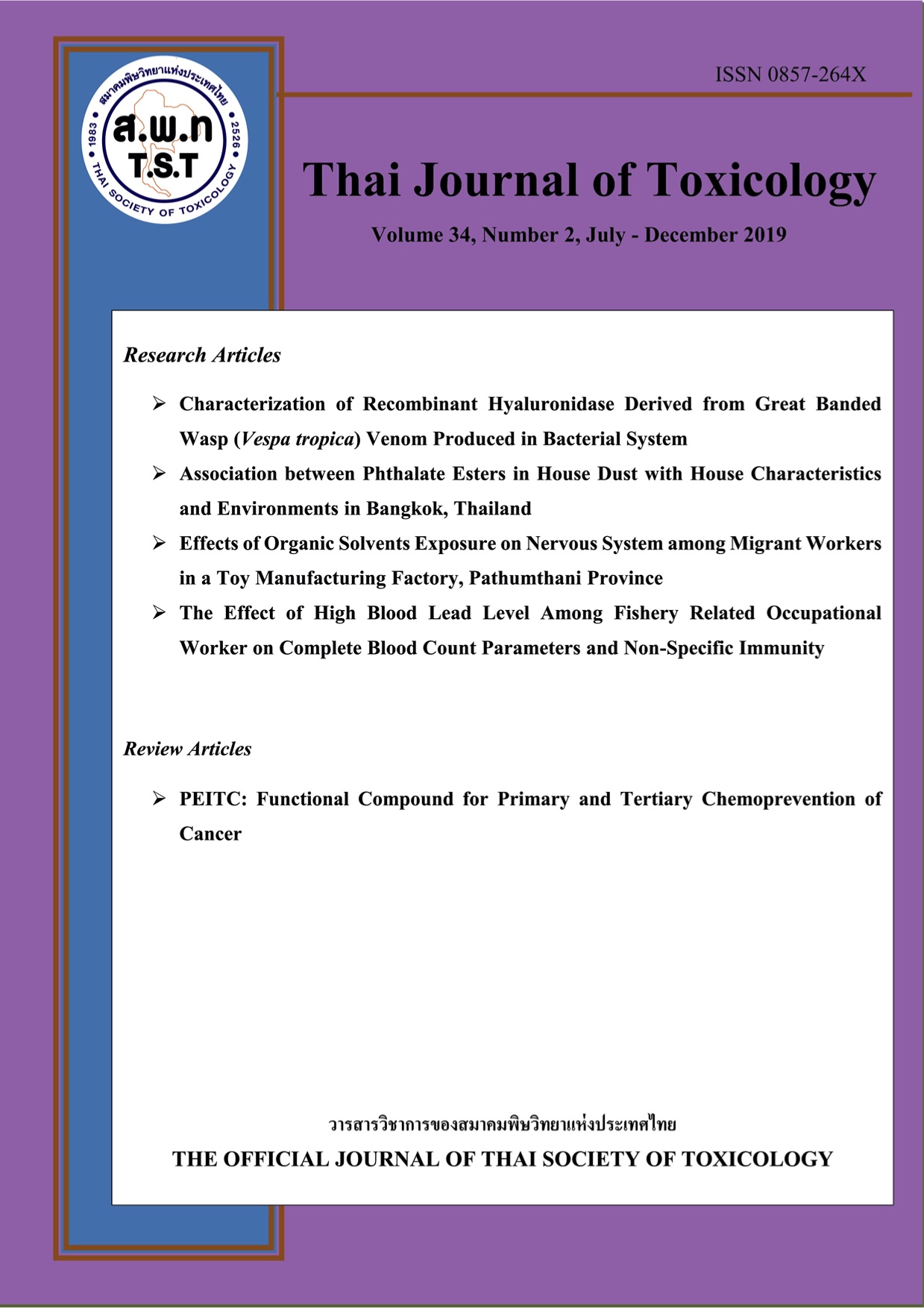Association between Phthalate Esters in House Dust with House Characteristics and Environments in Bangkok, Thailand
Main Article Content
Abstract
Phthalate esters (PEs) are plasticizer in polyvinylchloride plastics (PVC). PEs have been recognized to be house pollutants and house dust were considered as reservoir of PEs. This study aimed to investigate PEs concentration in house dust and associated between PEs concentration and house characteristics and environments. Samples of floor dust were collected by handheld vacuum cleaner and paper dust bags from the floor and the surface of objects that were > 60 cm above floor (multi-surfaces dust) from 89 rooms of 4 apartments in Bangkok, Thailand. PEs in dust was analyzed by gas chromatography-mass spectrometry. Occupants of each room were interviewed about characteristics and environments of apartment. The results show that di (2-ethylhexyl) phthalate (DEHP) had the highest level in house dust both from floor and multi-surface. Factors associated to total PEs from floor dust were age of apartment, floor material and indoor ventilation. There was no association between total PEs from multi-surface dust and characteristics and environments of apartment. Our findings show that when using house dust as an exposure assessment, it is very important to note where samples were collected from. Environmental health related organization should concern about PEs in house dust and its effects on resident’s health.


